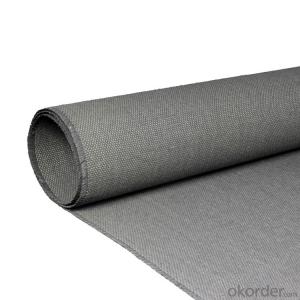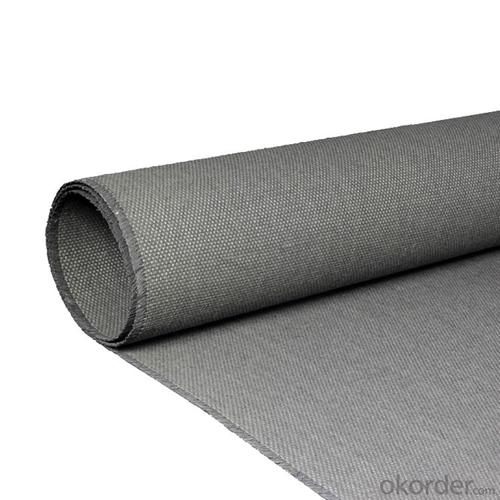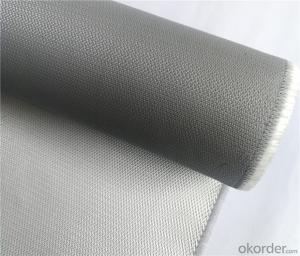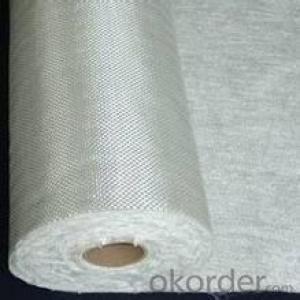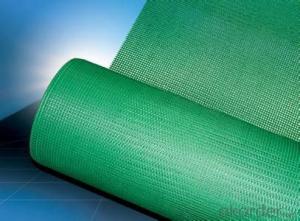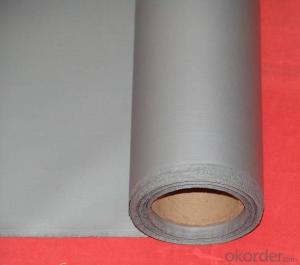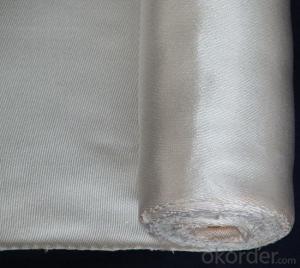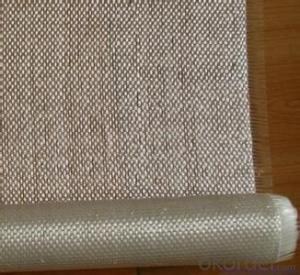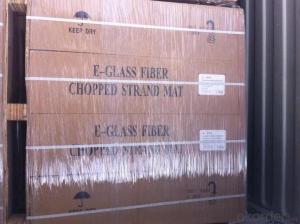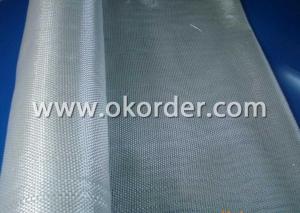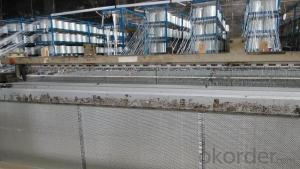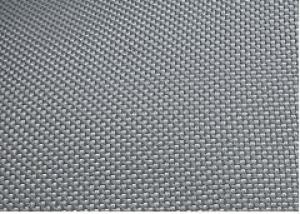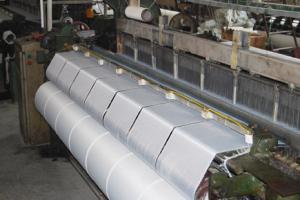3D Fireproof Fiberglass Fabrics Coated with Calcium Silicate
- Loading Port:
- Ningbo
- Payment Terms:
- TT OR LC
- Min Order Qty:
- 500 m²
- Supply Capability:
- 300000 m²/month
OKorder Service Pledge
OKorder Financial Service
You Might Also Like
Description: The heavyweight woven fiberglass fabric treated with special calcium silicate solution which provides a high-temperature resistance as well as greater abrasion. The continuous temperature up to 700℃, Short burst up to 750℃
Features: high temperature resistance,heat resistance
Application: Removable insulation mattress, jacket & pad, Fire doors/smoke curtain, Dust filter bag, Flexible expansion joints & compensators
PRICE: USD5 per square meter
UNIT: square meter
MOQ: 500square meters
Weight: 1100gsm
Width: 1m 1.5m 1.8m or customized
Yarn Type: E-glass
Standing temperature: up to 700℃
Product name: Calcium Silicate Coated Fiberglass Fabric
Coating/Finish/Surface Treatment: Calcium Silicate coated
Roll length: 50 meter or customized
Color: grey or customized
Weave Type:plain woven
Alkali content: Alkali free
Processing service: cutting
Material: fiberglass
Thickness: 1.4mm
Size: can be customized
Supply ability: 300000 meters per month
Packaging: Rolls packed In cartons loaded on pallets or according to customers' requirements.
Lead time: 7-30 days
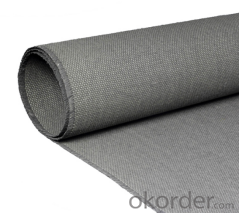
- Q: Can fiberglass fabrics be used for insulation in refrigeration systems?
- Fiberglass fabrics have the ability to be utilized as insulation in refrigeration systems. Due to its exceptional thermal properties, fiberglass is frequently employed as a material for insulation. Its lightweight and durable nature enable it to effectively prevent heat transfer, thus making it suitable for insulating refrigeration systems. Moreover, fiberglass fabrics can be easily shaped or molded to accommodate the specific requirements of the refrigeration system, ensuring a proper and snug insulation. In addition, it possesses moisture resistance, which is crucial in refrigeration systems where condensation may take place. In conclusion, fiberglass fabrics are a dependable option for insulating refrigeration systems and are widely employed in the industry.
- Q: What are the different weaves of fiberglass fabric?
- In the production of fiberglass fabric, various weaves are commonly utilized, each possessing distinct characteristics and applications. Some of the frequently employed weaves include plain weave, twill weave, satin weave, and leno weave. 1. Plain weave: This weave pattern is the most basic and straightforward, with the weft and warp fibers interlacing in a simple over-and-under manner. The resulting fabric is balanced, possessing equal strength in both directions. Hence, it is suitable for general applications where strength and stability are required. 2. Twill weave: Twill weave creates a diagonal pattern by interlacing the weft and warp fibers. This weave produces a sturdy and durable fabric that exhibits good drapability and flexibility. It is commonly used in applications demanding high strength and resistance to tearing. 3. Satin weave: Satin weave is renowned for its smooth and lustrous surface, achieved by floating the weft over multiple warp fibers before interlacing. This weave produces a fabric with excellent drape, high strength, and low porosity. It is often employed in applications desiring a high-quality finish, such as in the production of composite materials. 4. Leno weave: Leno weave is a distinctive pattern involving the twisting of adjacent warp fibers to create a stable and open mesh structure. This weave is frequently used for reinforcement purposes, providing excellent stability and preventing fraying or unraveling of the fabric. It finds applications in filtration, insulation, and reinforcement in composites. In summary, the selection of weave in fiberglass fabric production relies on the specific requirements of the intended application. Each weave offers unique properties in terms of strength, flexibility, porosity, and finish, enabling a wide range of applications across various industries.
- Q: Can fiberglass fabric be used for welding blankets?
- Indeed, welding blankets can make use of fiberglass fabric. Possessing heat-resistant qualities and remarkable fire-retardant features, fiberglass fabric proves itself as an ideal choice for safeguarding against sparks, slag, and molten metal during welding procedures. Its ability to endure high temperatures without succumbing to melting or burning establishes it as a dependable shield between the welding area and nearby objects. Moreover, fiberglass fabric's lightweight and pliable nature make it effortless to handle and maneuver. Its durability and resilience against abrasion additionally enhance its aptness for welding blankets, guaranteeing enduring protection and safety within welding environments.
- Q: What is the typical width of fiberglass fabrics?
- The typical width of fiberglass fabrics can vary depending on the specific application and manufacturer. However, standard widths for fiberglass fabrics range from 36 to 60 inches (91-152 cm). These widths are commonly used in industries such as aerospace, automotive, construction, and marine. It is important to note that custom widths can also be produced for specific requirements if needed.
- Q: How is fiberglass fabric laminated?
- Resin infusion is the method employed to laminate fiberglass fabric. This technique necessitates the immersion of the fabric in a liquid resin, which can be epoxy, polyester, or vinyl ester resin. Typically, a catalyst is mixed with the resin to initiate the curing process. To initiate the lamination of fiberglass fabric, the fabric is initially placed on a mold or surface. Subsequently, the resin is poured or applied onto the fabric, ensuring even distribution across the surface. The fabric absorbs the resin, thoroughly impregnating it. To achieve the desired thickness and strength, this procedure is often executed in multiple layers. Once the resin has saturated the fabric, the curing process commences. The duration of curing is contingent upon the type of resin used and can span from a few hours to several days. Throughout the curing process, the resin solidifies, generating a robust and enduring laminate. Following the curing process, the fiberglass laminate may undergo supplementary procedures such as trimming, sanding, or polishing to attain the final desired form and finish. The specific application or product being manufactured dictates the diversity of these supplementary steps. In summary, the lamination of fiberglass fabric involves immersing the fabric in resin and allowing it to cure, resulting in a sturdy and inflexible composite material extensively employed across diverse industries, including aerospace, automotive, construction, and marine.
- Q: Glass fiber cloth and glass fiber?
- Characteristics of glass fibers:The general concept of glass is hard and brittle objects, not suitable as structural material, but as the thread, the strength is greatly increased and is flexible, with resin to give it shape can finally become excellent timber structure. Glass fibers increase in strength as their diameter decreases.
- Q: Can fiberglass fabric be used for reinforcement in agricultural tanks?
- Indeed, fiberglass fabric is a suitable option for reinforcing agricultural tanks. Renowned for its impressive strength and durability, fiberglass fabric proves to be an optimal material for reinforcing different structures, including tanks. Its resistance to corrosion, chemicals, and weathering is crucial for agricultural tanks, as they often face harsh conditions. Moreover, the lightweight nature of fiberglass fabric simplifies its handling and installation within tanks. Ultimately, the utilization of fiberglass fabric for reinforcing agricultural tanks can significantly enhance their structural integrity and lifespan.
- Q: Can fiberglass fabric be used for making sails?
- Indeed, sails can be crafted using fiberglass fabric. This resilient and long-lasting material is frequently employed in a multitude of uses, including the construction of boats. When employed as a fabric for sail production, fiberglass boasts an exceptional strength-to-weight ratio, enabling the sail to endure turbulent weather conditions and strong winds. Moreover, it is resistant to tearing and stretching, rendering it a dependable choice for sailing enthusiasts. Additionally, a protective coating can be applied to fiberglass fabric to augment its water and UV resistance, guaranteeing the sail's durability. In summary, fiberglass fabric presents a multitude of benefits for the creation of sails, rendering it an esteemed option amongst sailors and sail manufacturers alike.
- Q: How does fiberglass fabric perform in high-pressure applications?
- Fiberglass fabric is known for its exceptional performance in high-pressure applications. Due to its inherent strength and durability, fiberglass fabric can withstand high levels of pressure without compromising its structural integrity. The tightly woven fibers of fiberglass fabric provide excellent resistance to stretching, tearing, and bursting, making it an ideal choice for applications that involve high-pressure environments. One of the key advantages of fiberglass fabric in high-pressure applications is its ability to maintain dimensional stability even under extreme pressure. Unlike other materials that may deform or lose their shape, fiberglass fabric retains its form and strength, ensuring consistent performance over time. This stability is crucial in industries such as aerospace, oil and gas, and automotive, where high-pressure conditions are common. Additionally, fiberglass fabric has high chemical resistance, making it suitable for applications that involve exposure to corrosive substances or harsh environments. It can withstand the effects of various chemicals, acids, solvents, and even extreme temperatures, ensuring its longevity and reliability in high-pressure settings. Moreover, fiberglass fabric offers excellent thermal insulation properties, which can be advantageous in high-pressure applications where temperature control is crucial. It can effectively resist heat transfer, preventing energy loss and maintaining the desired temperature within the system. In summary, fiberglass fabric performs exceptionally well in high-pressure applications due to its strength, dimensional stability, chemical resistance, and thermal insulation properties. Its ability to withstand high levels of pressure without compromising its structure makes it an ideal choice for industries that operate in demanding environments.
- Q: How to deal with the high temperature fiberglass cloth, so that the trimming can not be scattered
- The machine will have to do something else by hand.
Send your message to us
3D Fireproof Fiberglass Fabrics Coated with Calcium Silicate
- Loading Port:
- Ningbo
- Payment Terms:
- TT OR LC
- Min Order Qty:
- 500 m²
- Supply Capability:
- 300000 m²/month
OKorder Service Pledge
OKorder Financial Service
Similar products
Hot products
Hot Searches
Related keywords
